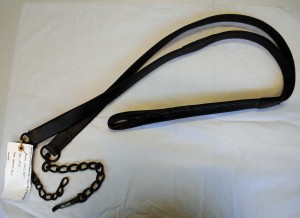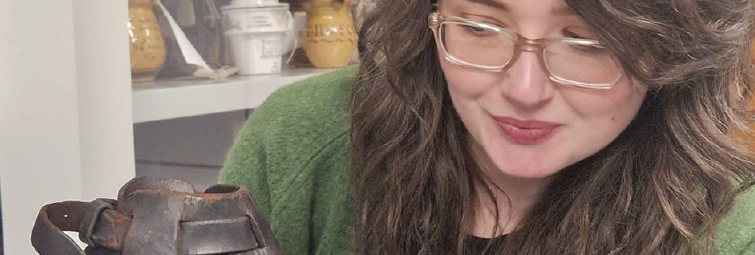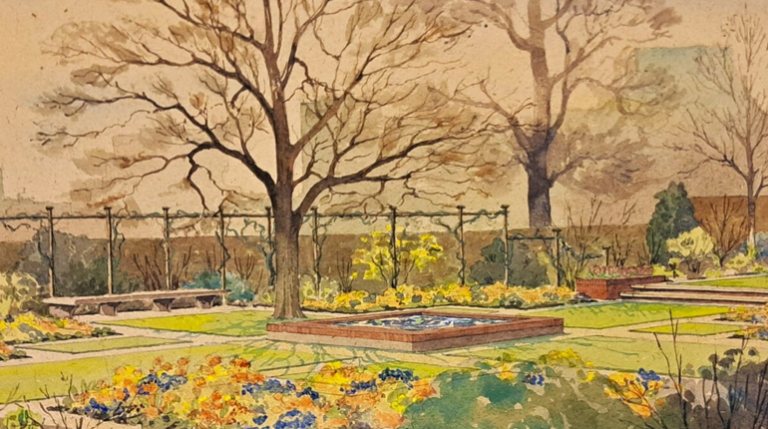My Favourite Object #6: 'Check Rein' and Blacksmithing Tools
-
Author
- Alison Hilton
-
Published Date
- April 15, 2014
<<This post was written by Christina Avramakis, Project Assistant for our Sense of Place project.
My role at MERL has been to accession and catalogue new objects coming into the Museum, and so I have been very lucky to get up close and personal with many interesting objects and stories. For this reason, it was difficult to choose just one object and in the end I have settled on two horse-related accessions (although the queen honeybee artificial inseminator was very tempting!).
The objects I have chosen are a ‘check rein’ (object number 2012/387) and a set of blacksmithing tools (object numbers 2012/455/1-3 – 2012/459).

I think that the check rein is particularly special as this style of driving horses on the farm was very rare, only employed in a small part of Yorkshire, near Hull. The check rein was used by Ron Creasey, who was one of the last horselads (as the men who worked with the horses on the farm were known), working with horses on the farm from 1946, at the age of 17, until 1960.
Common horse reins consist of two lines which the driver uses to direct the horses or stop them. A check rein only uses a single line and so the driver controls and directs the horse using the rein in combination with verbal commands. Depending on the pull on the check rein, the horse will turn right or left, but the horse will only stop at the verbal command of the driver. For this reason, the horselad had to be both highly skilled to handle the check rein to ensure that the horses moved in the right direction at the right time, and sufficiently commanding that the horse would respond to its orders. It was for this same reason that the use of the check rein did not spread further; because of the reliance on verbal commands to manage the horses, some farmers simply considered it too unsafe, for if there was an emergency and the driver could not use his voice, there was no other way to stop the horses.

The blacksmithing tools, specifically a number of pincers and cat’s-head hammers, were used in Hampshire. They are just a small selection of blacksmith tools, but I like them for four reasons – their testament to innovation, sustainability, skill and endurance.
The pincers appeal to me for their ridged texture; but they have these ridges because of the way that they are made. They are an excellent example of innovation and recycling – they are made from used, worn-out rasps which, as they were no longer fit for their original purpose, have been fashioned into something different and given new life.
The cat’s-head hammers have a small prominent bulge on each side of the head which, it has been suggested, almost have the appearance of two ears, and so may be where the name comes from. One of the small bulges is used to create clips on the horseshoe, although the use of these hammers is now uncommon. For me, the skill, dexterity and precision required to shape the metal by striking it with just this small bulge is highly impressive.
Finally, what struck me as I learned more about these tools and their makers, beyond the specialised skills involved, were the unbreakable links between these people through a system of apprenticeships and mentoring that extended from the early 20th Century to the present day. Particularly at a time when there is a greater emphasis on an academic l education at school and university, it is both fascinating and reassuring to know that the traditional and unique skills and knowledge of the countryside have not yet been lost but have endured, with generations of blacksmiths passing on the tricks of the trade.






